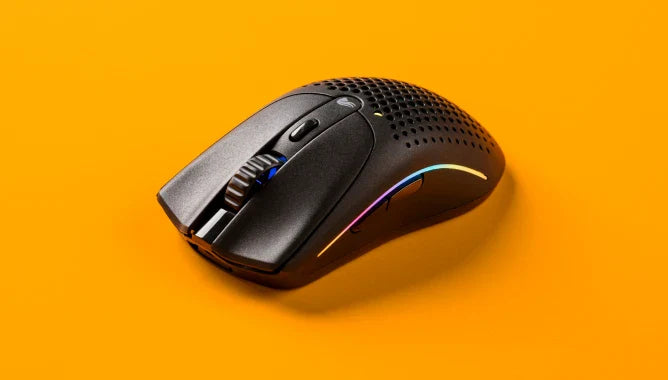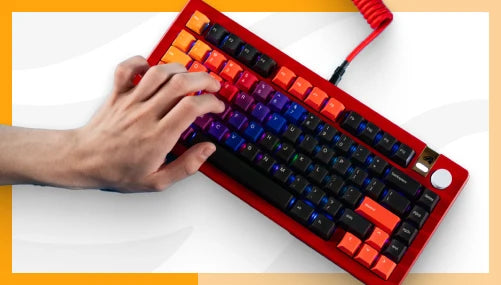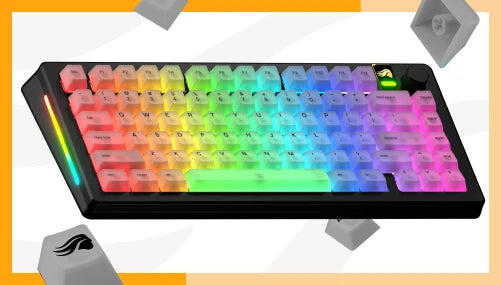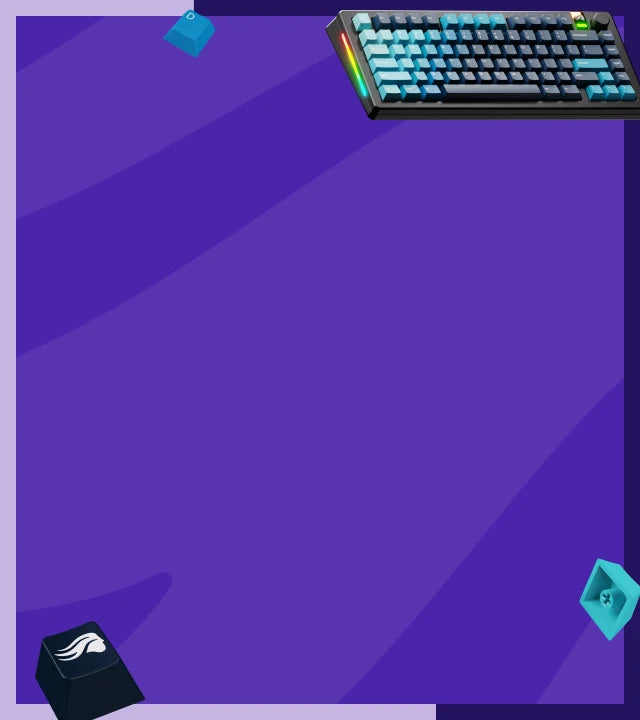
EXPLORE
A Gamer’s Guide to Custom Keycaps
Let’s break down the most popular keycap types and their varying tactility, acoustics, and aesthetics.
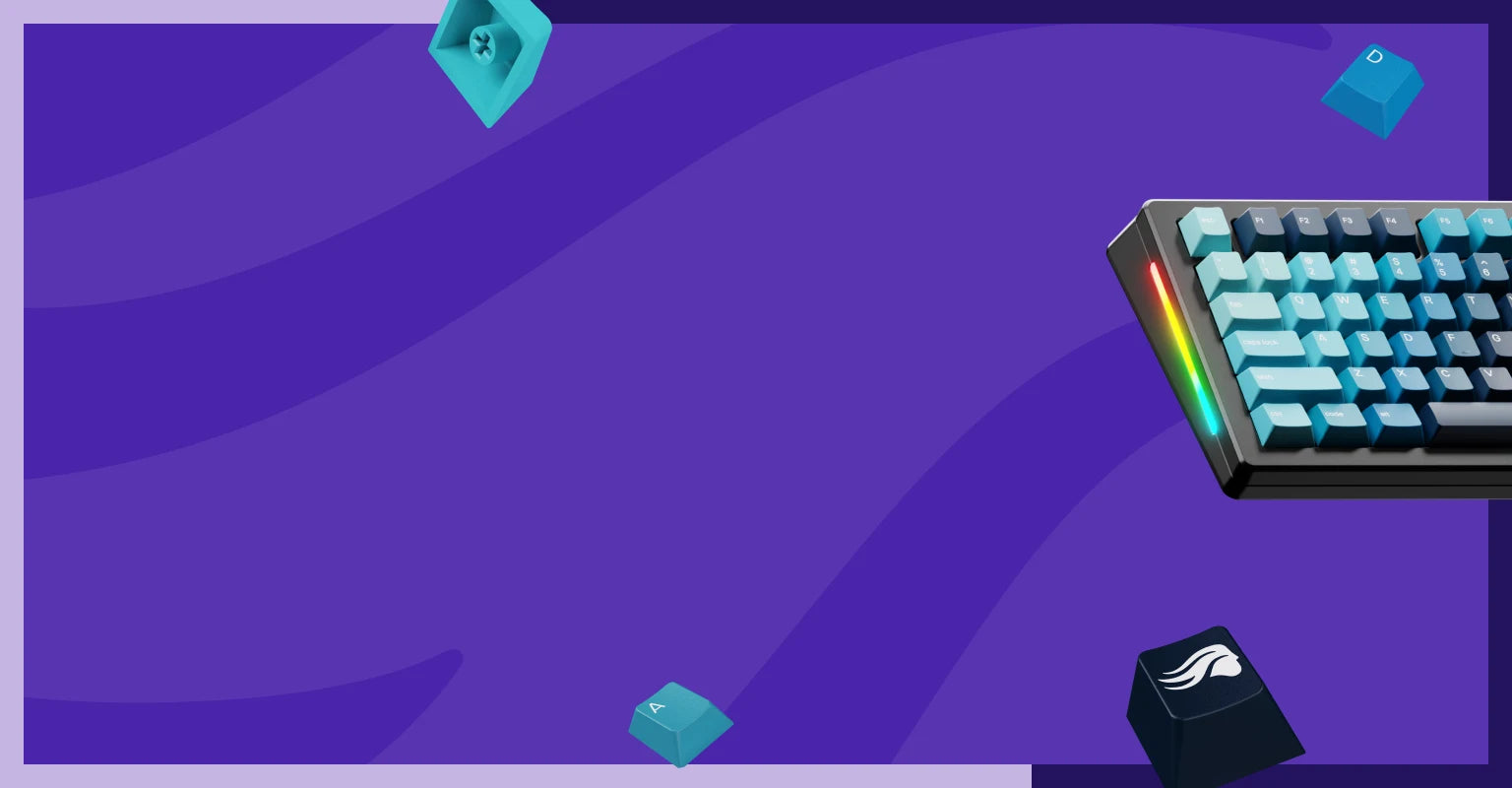
EXPLORE
A Gamer’s Guide to Custom Keycaps
Let’s break down the most popular keycap types and their
varying tactility, acoustics, and aesthetics.

EXPLORE
A Gamer’s Guide to Custom Keycaps
Let’s break down the most popular keycap types and their
varying tactility, acoustics, and aesthetics.
A GAMER'S GUIDE TO CUSTOM KEYCAPS
Keycap Materials 101
Choosing the right keycap material is like picking out guitar strings—the quality and thickness directly influence the sound and feel you're after. Let’s dive into some of the most popular materials used.
A GAMER'S GUIDE TO CUSTOM KEYCAPS
Keycap Materials 101
Choosing the right keycap material is like picking out guitar strings—the quality and thickness directly influence the sound and feel you're after. Let’s dive into some of the most popular materials used.
A GAMER'S GUIDE TO CUSTOM KEYCAPS
Keycap Materials 101
Choosing the right keycap material is like picking out guitar strings—the quality and thickness directly influence the sound and feel you're after. Let’s dive into some of the most popular materials used.
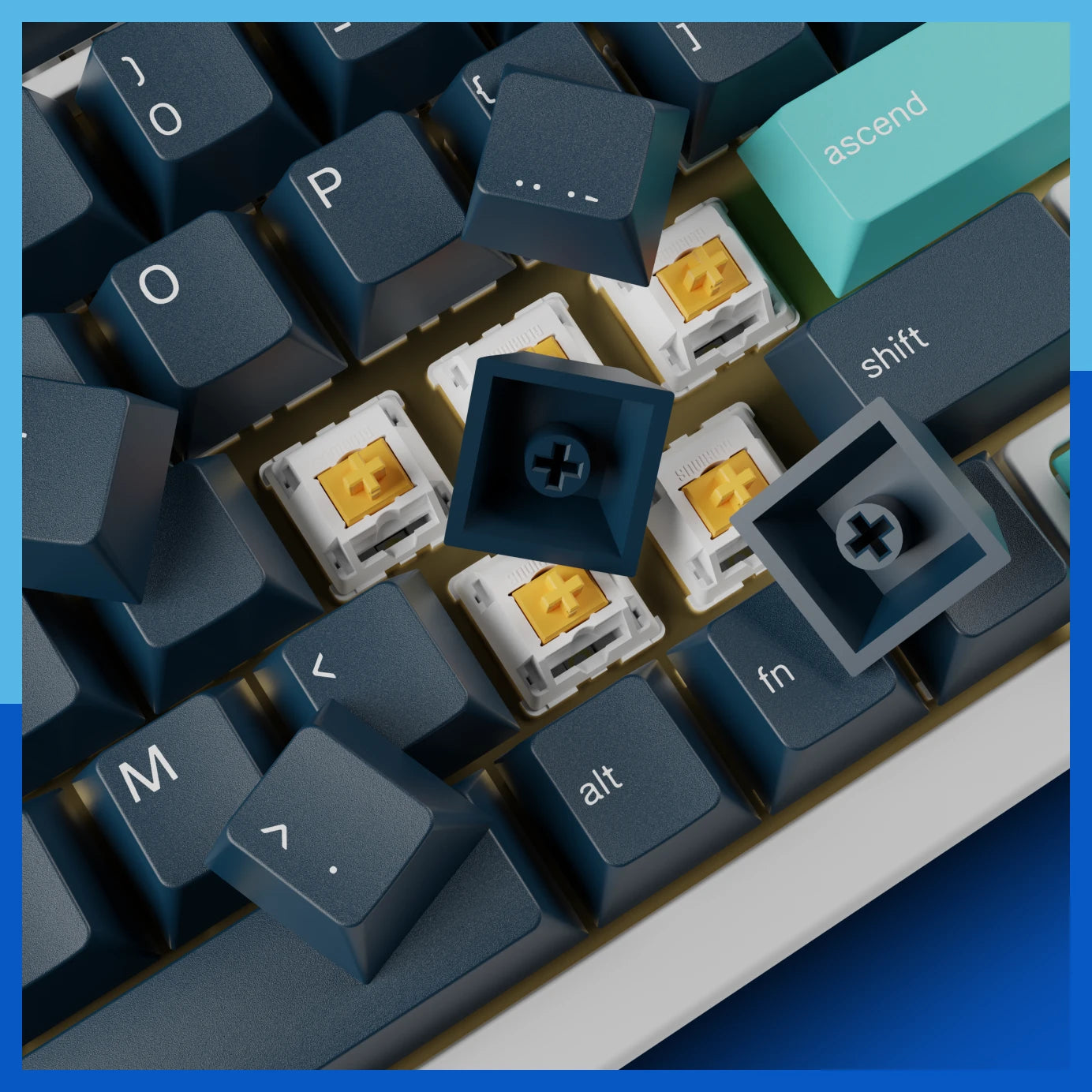

PBT Polymer
PBT keycaps are denser and more durable than other common keycap materials like ABS (more on this below), resulting in a deeper—or thockier—typing sound. Because PBT keycaps feature a more textured surface than ABS, they’re also more resistant to unwanted shine from your skin’s natural oils over time. While that elevated quality may come at a more premium price, you get what you pay for right?
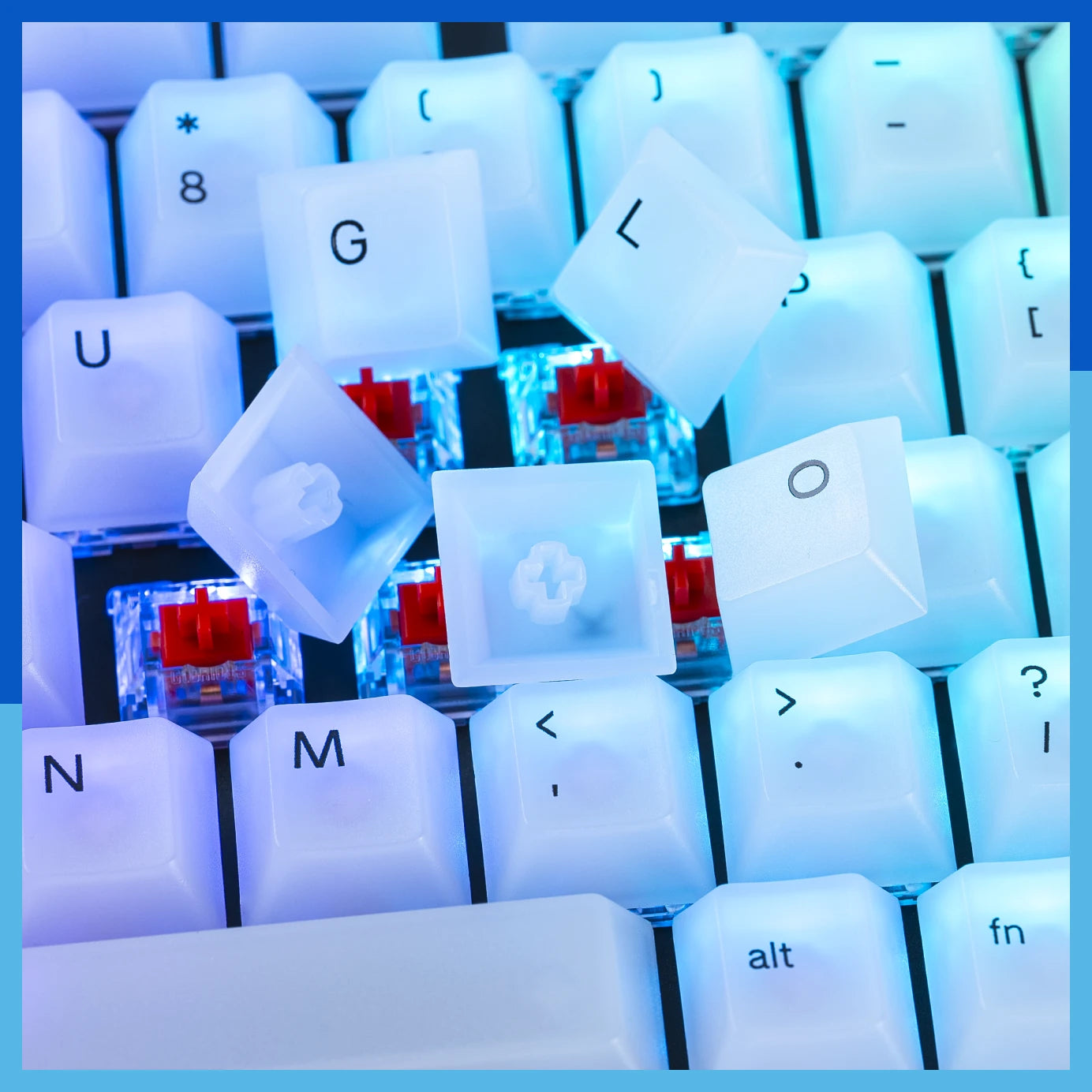

Polycarbonate
This one’s for you RGB fans. Polycarbonate (or PC for short) keycaps feature a fully translucent build for that full RGB glory without sacrificing durability. Their sound profile is slightly higher-pitched, or clackier, than PBT, and feel smooth and silky to the touch. What’s even better is that because polycarbonate is UV resistant, PC keycaps don’t yellow over time. Win!
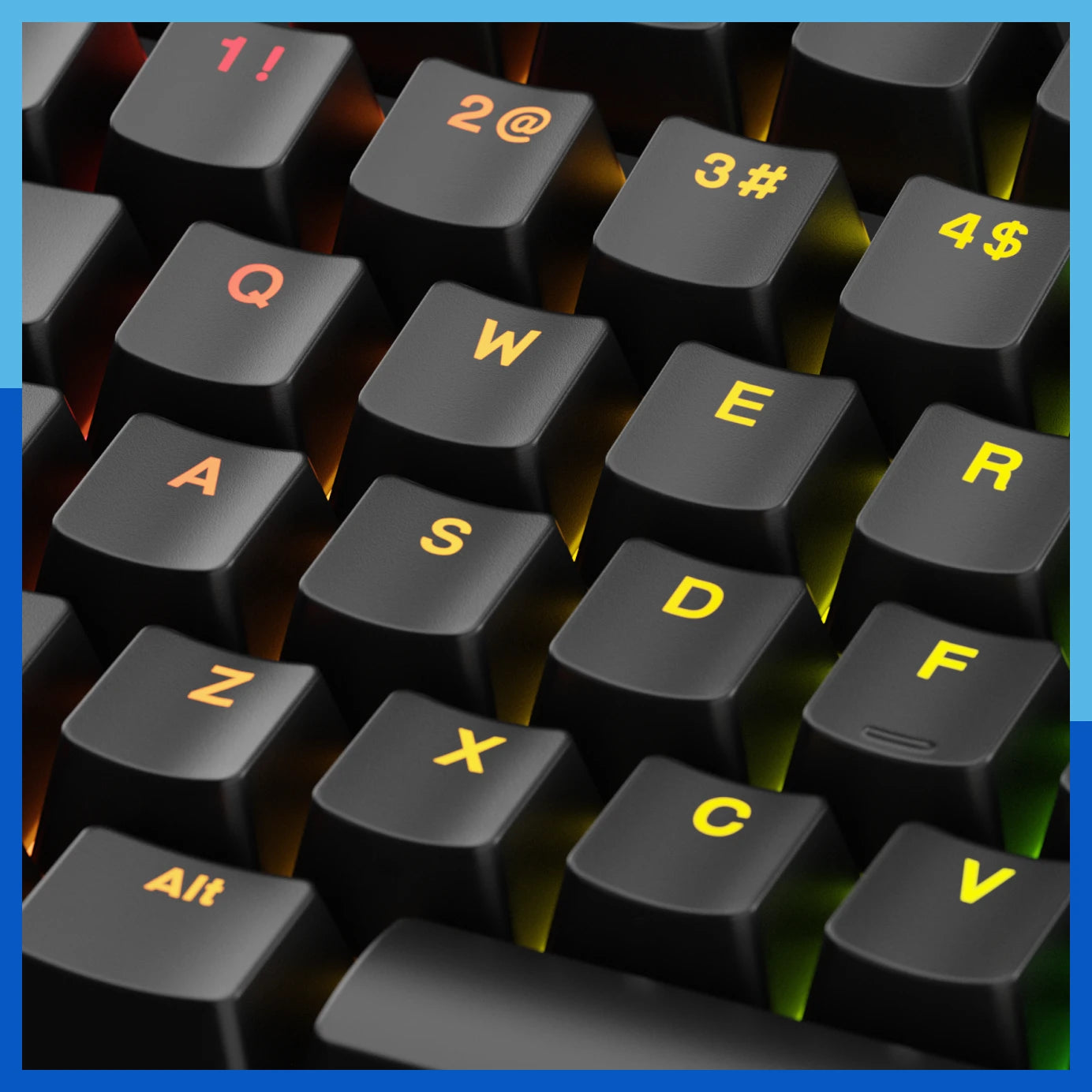

ABS Plastic
ABS keycaps are the most common keycap material, given that they’re the least expensive to make. Because they’re thinner, they tend to have a higher-pitched, or clackier, sound profile. Over time, ABS keycaps can shine due to extensive use. However, all is not lost: opting for doubleshot ABS keycaps can combat some of that inevitable wear and tear by preventing their legends from fading. More on the doubleshot process below!
A GAMER'S GUIDE TO CUSTOM KEYCAPS
Keycap Legends 101
Next, let's talk legends. This refers to the characters on your keycaps, like letters, numbers, and symbols. There are a variety of ways to apply these legends to make sure they're consistent, fade-resistant, and even see-through for those eye-catching RGB effects.
A GAMER'S GUIDE TO CUSTOM KEYCAPS
Keycap Legends 101
Next, let's talk legends. This refers to the characters on your keycaps, like letters, numbers, and symbols. There are a variety of ways to apply these legends to make sure they're consistent, fade-resistant, and even see-through for those eye-catching RGB effects.
A GAMER'S GUIDE TO CUSTOM KEYCAPS
Keycap Legends 101
Next, let's talk legends. This refers to the characters on your keycaps, like letters, numbers, and symbols. There are a variety of ways to apply these legends to make sure they're consistent, fade-resistant, and even see-through for those eye-catching RGB effects.
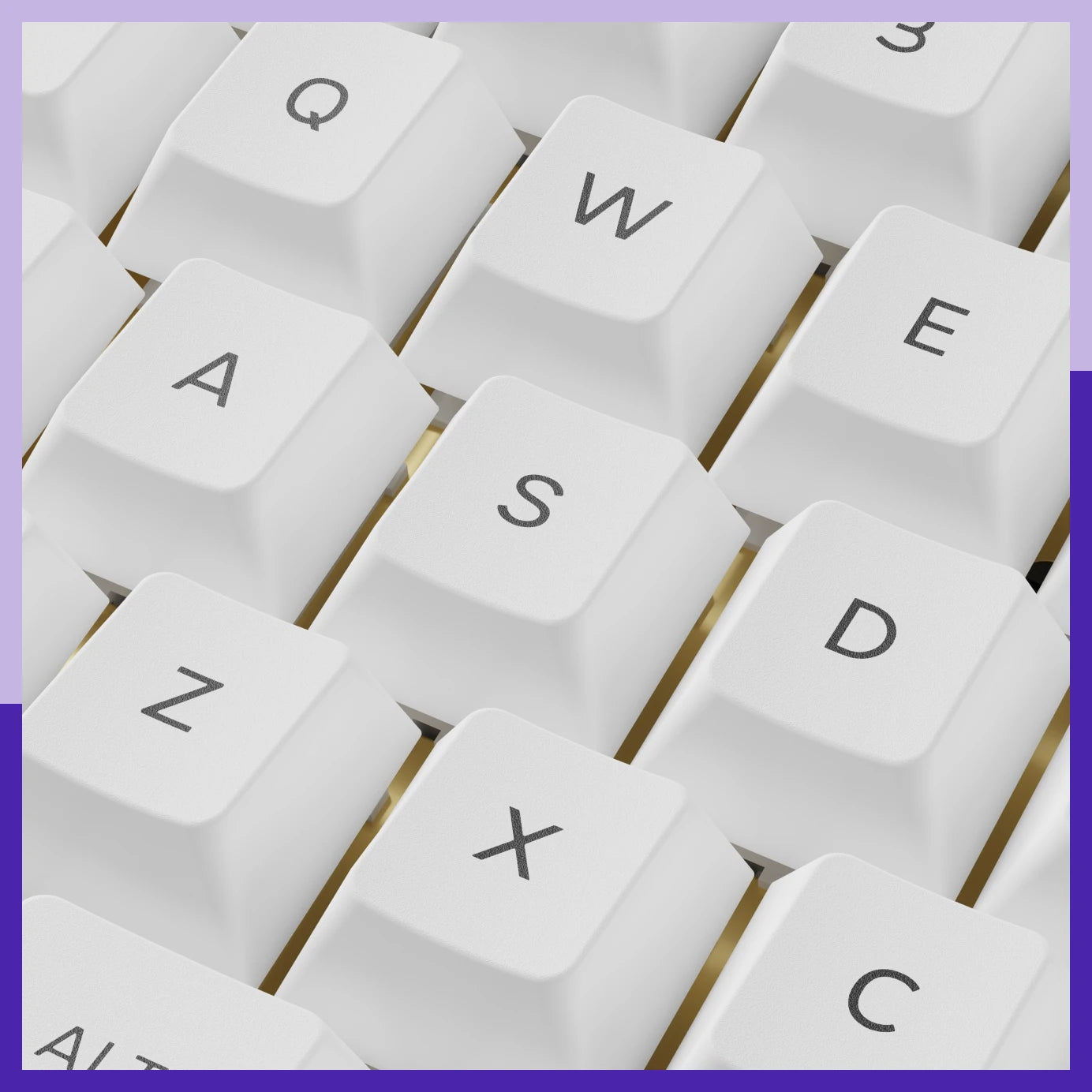

Dye Sublimation
Time for some science. Sublimation is when a solid goes straight to gas (skipping the liquid phase). When the dye turns into gas, it dives deep into the plastic and changes its color at a molecular level. In other words, it permanently dyes the keycap. So, no matter how much you press the keycap, the legends stay sharp and visible. And since the ink becomes one with the keycap, there are no unwanted bumps on the surface. Cool, right?
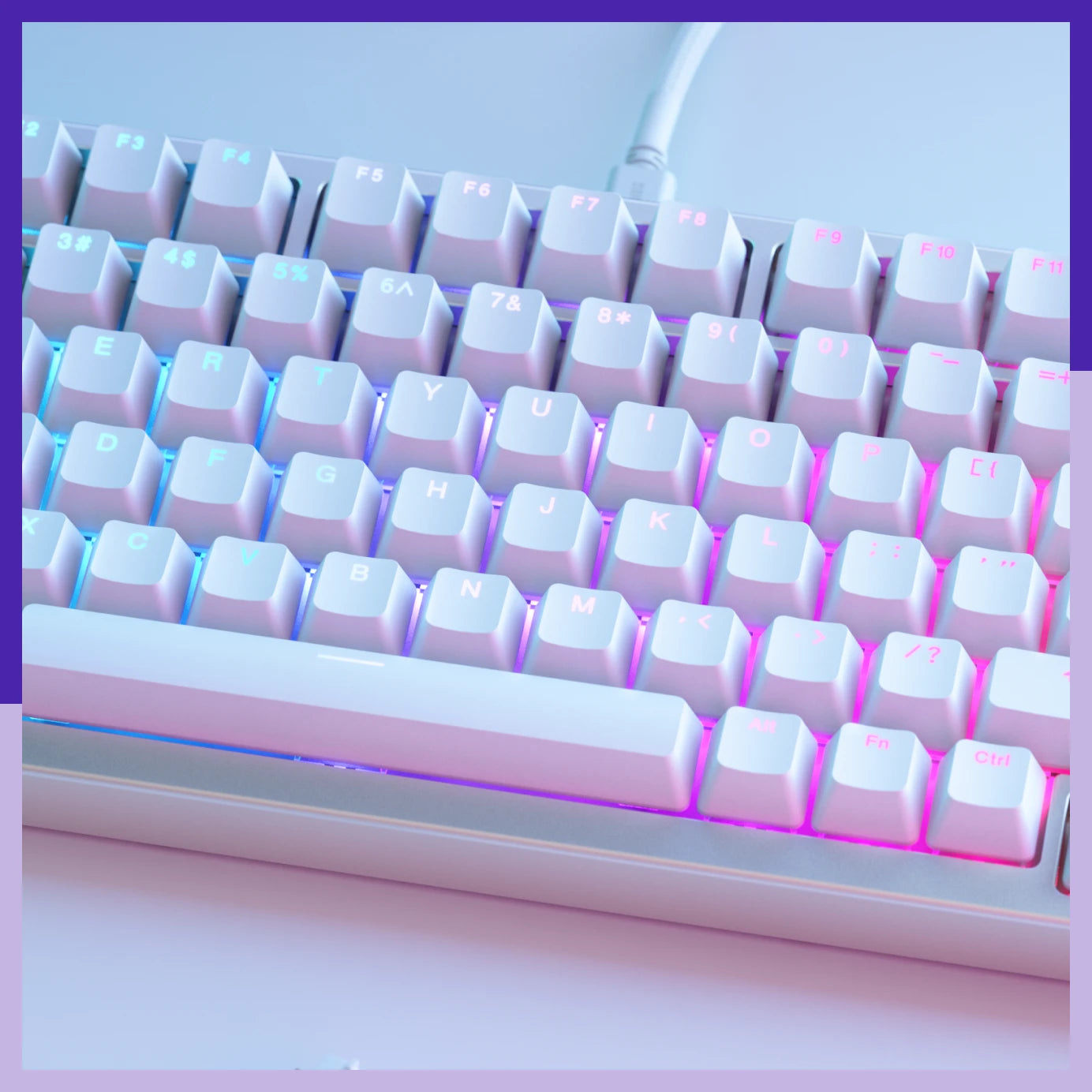

Doubleshot (or Double-Shot)
Just like the name implies, doubleshot keycaps involve two separate pieces of plastic (one for the body and another for the legend) being fused together. Because the legend is its own layer of plastic, it will never fade. Another cool perk of doubleshot keycaps is the use of translucent plastic for the legends. This lets RGB light shine vibrantly through each letter and symbol, creating unique lighting effects and maximizing visibility in the dark.
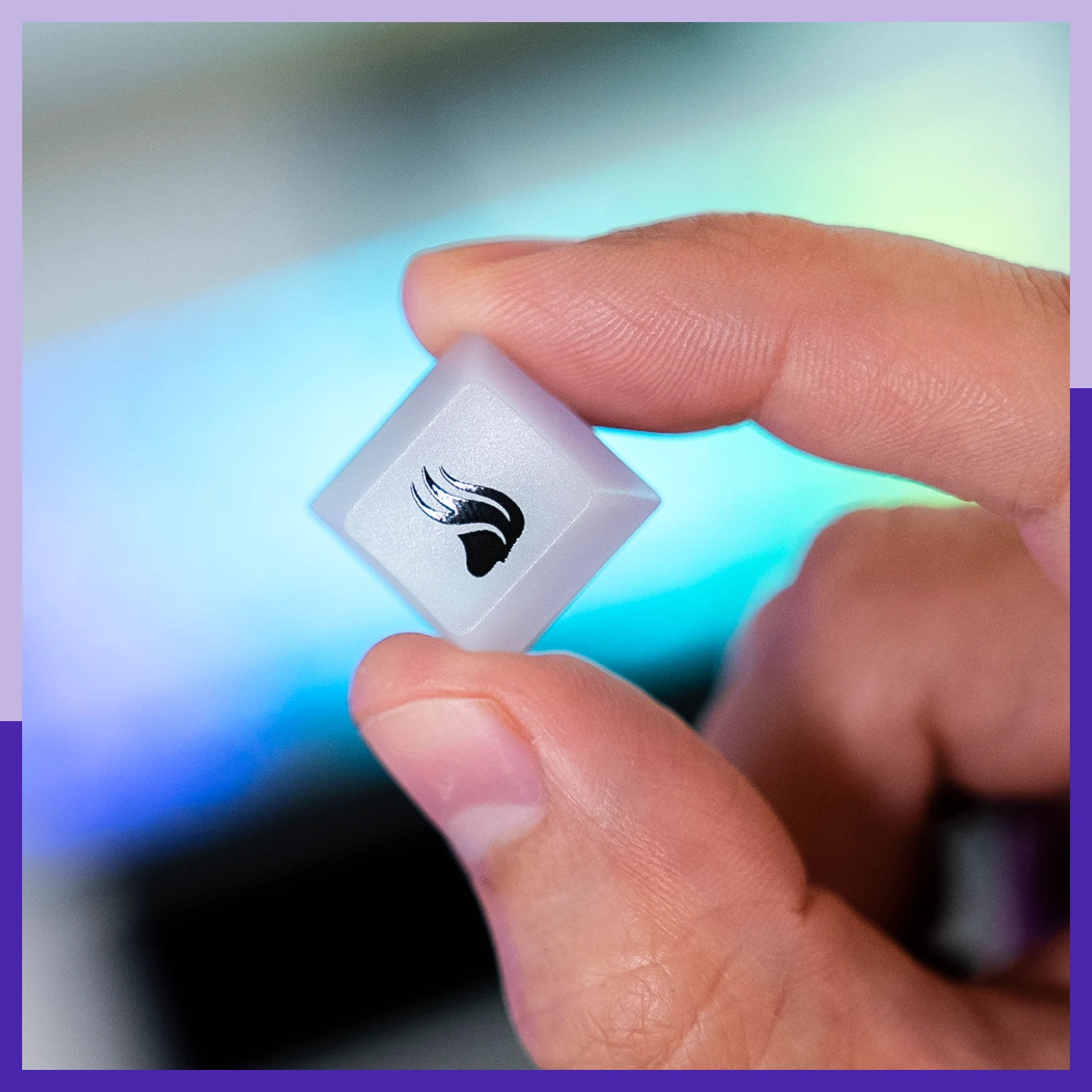

UV Printing
Last, but not least, is UV Printing. Though a less common printing method, it’s a practical way to apply fade-resistant legends. The process involves using ultraviolet light to dry digitally printed ink. UV printing is primarily used for translucent sets, like our Polychroma RGB Keycaps, due to its ability to be applied to a wide range of materials.
